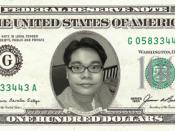Week Three Individual Assignment: International Finance Paper
Currency conversion rate changes are the most obvious risk of conducting business internationally; this can happen two ways: transaction and economic risks. Transaction risks arise when a firm agrees to pay or receive an amount of foreign currency. For example, if a US company agrees to purchase goods in 12 months for 100 million yen, and the dollar depreciates against the yen over that period, it will cost more in dollars to purchase the same amount of yen. On the other side of the same coin, should a US exporter find the US dollar suddenly very weak compared to the yen, the exporter would have an advantage over Japanese firms, since the US firm is receiving more when converting yen back into dollars. The opposite occurred in 2000 and 2001 when the yen dropped in value; Japanese automakers suddenly had an advantage over their US counterparts.
This competitive advantage or disadvantage is considered economic risk. (Brealey, 2004)
The obvious way to mitigate these risks is to buy the yen forward; then, the price is locked in, and there's no risk that the yen will appreciate in value. Of course, if the yen are purchased forward, there is no chance that the US firm will be able to take advantage of any depreciation of yen. These are both points that must be considered when conducting business with a foreign currency. (Brealey, 2004)
Since early 2002, the dollar has fallen steadily in value, loosing 30% of its value against the euro and 20% against the yen. When the dollar falls like this, foreign companies, and therefore American investors who own stock in foreign companies, tend to fair well. As long as exports remain steady, the foreign companies will earn more, since their currency is now...


